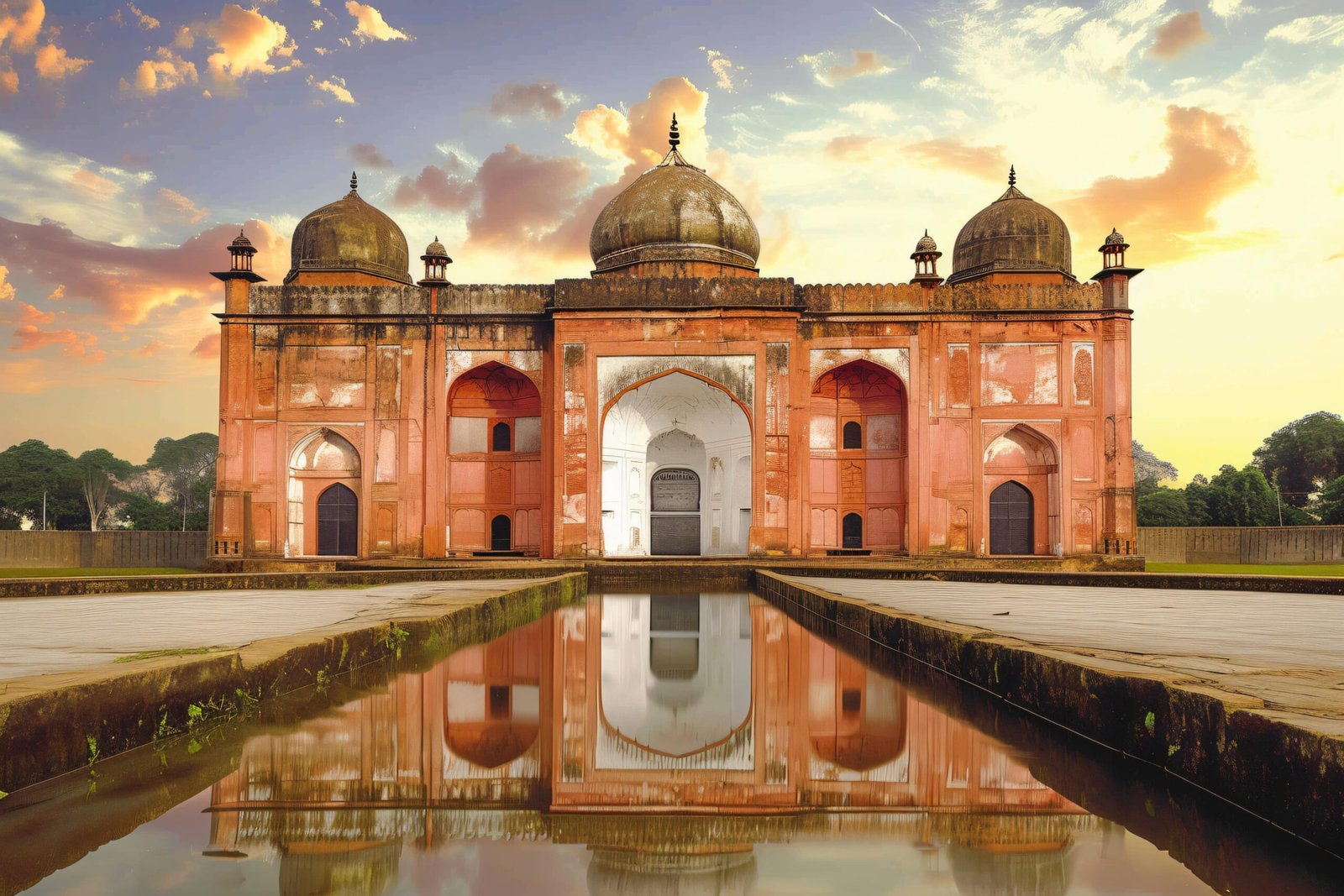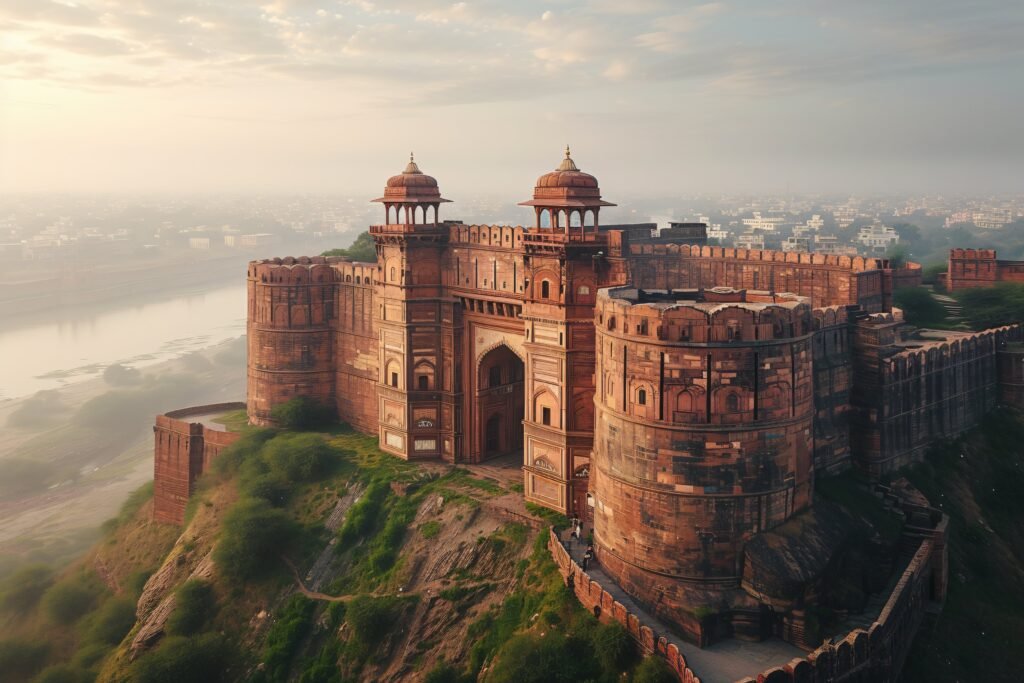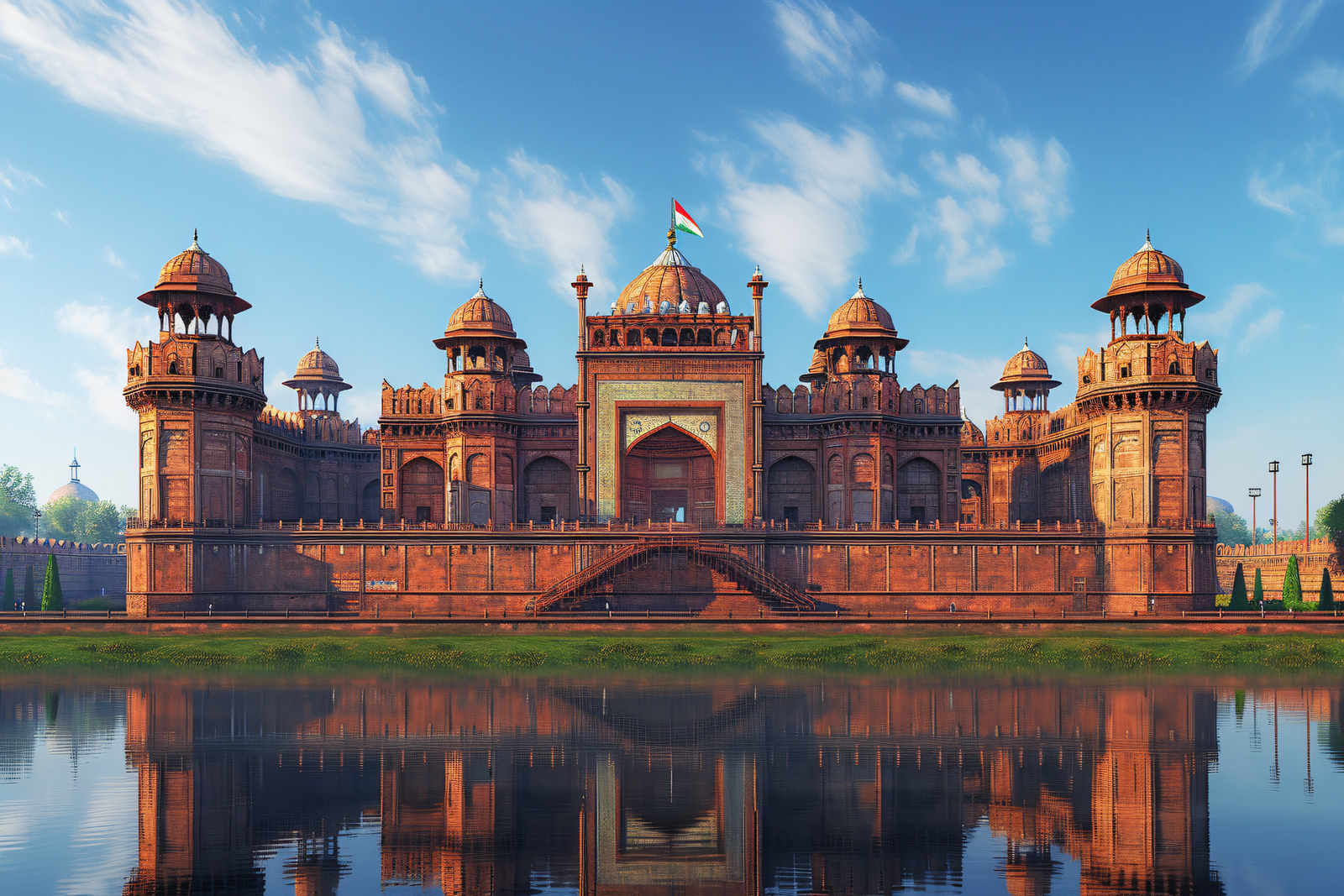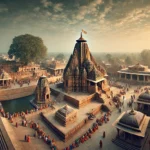Not only is the Red Fort, also known as Lal Qila, a historical landmark, but it also serves as a showcase for India’s magnificent architecture and rich cultural legacy. This UNESCO World Heritage Site, which is centrally located in Delhi, is a testament to the Mughal Empire’s architectural prowess as well as India’s historic past. The Red Fort provides an in-depth look at the magnificence of the Mughal era with its distinctive red sandstone walls, fine craftsmanship, and historical significance
A Synopsis of the Past
Shah Jahan, the Mughal Emperor, gave the order to start building the Red Fort in 1638 with the intention of using it as the primary palace for Mughal monarchs. Strategically placed on the Yamuna River’s banks, the fort offers a natural defence as well as an attractive benefit. Delhi gained notoriety as the Mughal capital when Shah Jahan relocated his court from Agra to Delhi in 1648, once the fort was finished.
For more than 200 years, the fort was the centre of Mughal power and saw many significant historical occurrences, including the rise and fall of the Mughal Empire. Following the Indian Rebellion of 1857, Emperor Bahadur Shah II was overthrown by the British here, ushering in a new era of British colonial power and ending Mughal authority. The Red Fort has maintained its beauty and is still a vital reminder of India’s past in spite of its stormy past.

Meanwhile Architectural
The Red Fort’s architecture, which reflects the Mughal emperors’ varied tastes, is a masterful fusion of Persian, Timurid, and Indian traditions. The enormous red sandstone walls, which reach a height of almost 33 meters (108 feet), are what give it its most unique appearance. These walls enclose a vast area of around 254.67 acres, forming a shape that is almost rectangular.
The classic Mughal layout, which prioritises symmetry and axial planning, served as the inspiration for the fort’s design. The Lahore Gate, so named because it faces Lahore, serves as the main entryway to the fort. This gate is an appropriate entrance into the inner sanctum of the fort because of its imposing size and opulent design.
The Diwan-i-Aam (Hall of Public Audience) and Diwan-i-Khas (Hall of Private Audience) within the fort are notable examples of masterful architecture. The Diwan-i-Khas was set aside for more important and confidential discussions, while the Diwan-i-Aam was utilised for administrative and public gatherings. The exquisite decorations and elaborate marble work that adorn both halls highlight the artists’ skill. The Rang Mahal, also known as the Palace of Colours, is another noteworthy building inside the fort.
It was formerly the emperor’s personal residence. The vibrant and luxury environment created by the colourful and vivid tiles adorning its walls is reflected in the name of the establishment. The Moti Masjid (Pearl Mosque), a spotless white marble mosque renowned for its tasteful simplicity and tranquil atmosphere, is also located within the fort.
India Tourism
Cultural Importance
An important part of India’s cultural and historical environment has been the Red Fort. Numerous significant occasions have taken place there, such as the yearly Independence Day celebrations, where the Indian Prime Minister raises the flag and gives a speech to the populace. Jawaharlal Nehru established this custom in 1947, which heightens the fort’s symbolic significance as a symbol of liberty and patriotism.
The Red Fort has also served as a hub for cultural and artistic endeavours throughout its history. It served as a centre for artistic expression throughout the Mughal Empire, presenting dance, poetry, and music events. The fort’s stunning courtyards, gardens, and fountains made it the ideal location for these artistic endeavours and added to its standing as a hub of Mughal elegance and refinement.
Maintenance and Conservation
The Red Fort has endured hardships over the ages, such as deterioration from weathering and several invasions. Nonetheless, attempts have been made to protect and renovate this famous building. Several restoration efforts have been carried out by the Archaeological Survey of India (ASI) to preserve the fort’s historical authenticity and structural integrity.
The beautiful marble inlays and artwork were cleaned and preserved as part of one of the major restoration operations. Thanks to these initiatives, the fort will continue to be an enthralling example of Mughal craftsmanship and a popular tourist and history site.

Exploring the Red Fort
An holistic view of India’s rich history and architectural splendour can be had by visiting the Red Fort. Mondays are the only day of the week that the fort is closed to tourists. The Lahore Gate provides access, and guests are free to go around the fort’s walls at their own time, exploring its numerous buildings.
In addition, a museum featuring a variety of Mughal-era artefacts and exhibits is housed within the fort. This museum offers insightful information on the Mughal rulers’ daily lives as well as the fort’s historical significance.
You can also stroll through the lush gardens of the fort and soak in the tranquil environment while you’re there. Because of its layout, one may explore the fort at leisure and have plenty of opportunities to take in its historical aspects and architectural nuances.
My Opinion
An amazing reminder of India’s Mughal past and architectural prowess is the Red Fort. For anyone interested in learning more about India’s rich history, this landmark is a must-visit because of its grandeur, historical relevance, and cultural significance. You can’t help but be in awe of and reverence for the great age it represents when you enter through its beautiful gates and marvel at its elaborate patterns.
All things considered, the Red Fort is more than simply a historical site; it’s a vibrant example of Indian culture that never fails to enthral and inspire tourists from all over the world. The Red Fort offers a unique trip into the heart of Mughal history, perfect for anybody interested in architecture, history, or simply discovering India’s illustrious past.











